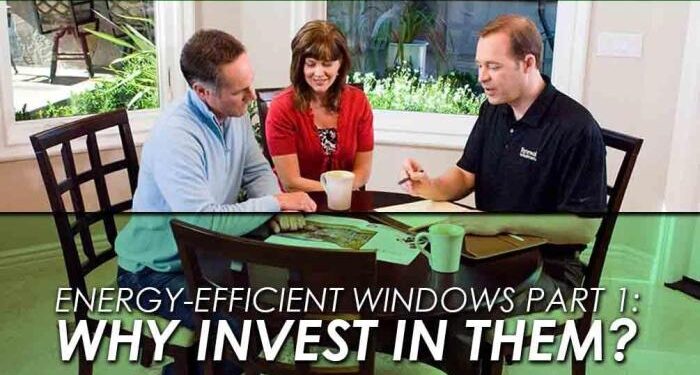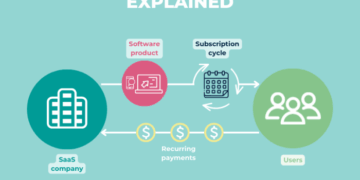Exploring the benefits of investing in energy-efficient windows, this guide dives into the reasons why it's a smart choice for homeowners. From cost savings to environmental impact, discover how upgrading your windows can lead to long-term advantages.
In the following sections, we will delve into the types of energy-efficient windows available, the installation process, and the cost-benefit analysis to help you make an informed decision for your home.
Importance of Energy-Efficient Windows
Energy-efficient windows play a crucial role in reducing energy consumption in residential buildings. By minimizing heat transfer, these windows help maintain a consistent indoor temperature, reducing the need for heating and cooling systems to work overtime.
Contribution to a Sustainable Environment
Energy-efficient windows contribute to a more sustainable environment by reducing the carbon footprint of homes. The decreased energy consumption means lower greenhouse gas emissions, which helps in combating climate change and preserving natural resources.
Cost Savings for Homeowners
One of the significant benefits of energy-efficient windows is the cost savings they provide to homeowners. By improving insulation and reducing energy usage, these windows lead to lower utility bills, making them a wise long-term investment for those looking to save money in the long run.
Types of Energy-Efficient Windows
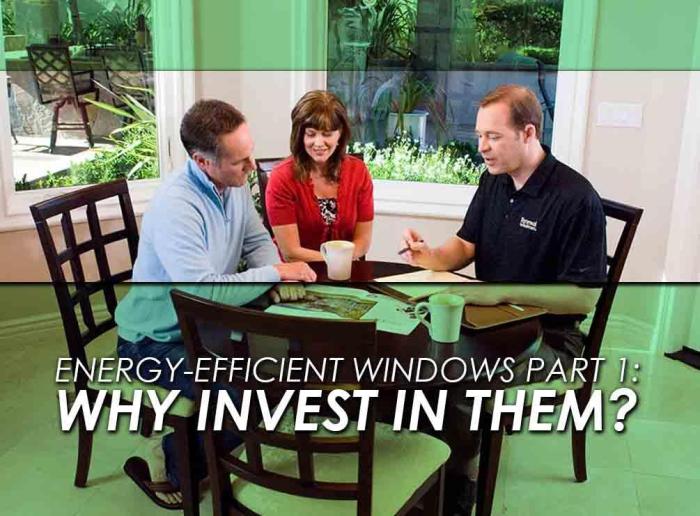
Energy-efficient windows come in various types, each offering different benefits when it comes to saving energy and reducing utility costs. Let's explore some of the common options available in the market.
Double-Pane Windows
Double-pane windows consist of two layers of glass with a space in between filled with insulating gas, such as argon or krypton. This design helps to reduce heat transfer and improve insulation, making them more energy-efficient compared to traditional single-pane windows.
Triple-Pane Windows
Triple-pane windows take energy efficiency to the next level by adding a third layer of glass, further enhancing insulation and reducing heat loss. While they are more expensive upfront, they provide superior thermal performance and can result in significant long-term energy savings.
Low-Emissivity (Low-E) Windows
Low-emissivity windows have a special coating that reflects infrared light while allowing visible light to pass through. This helps to regulate indoor temperatures by minimizing heat transfer, making them ideal for both hot and cold climates. Low-E windows can also protect furniture and flooring from UV damage.Materials Used in Energy-Efficient Windows:
Vinyl
Vinyl frames are popular for their durability, low maintenance, and excellent insulation properties.
Fiberglass
Fiberglass frames offer high strength, durability, and thermal performance, making them a sustainable choice for energy-efficient windows.
Wood
Wood frames provide a classic look and excellent insulation, but they require more maintenance compared to other materials.
Aluminum
Aluminum frames are strong and lightweight, but they are less energy-efficient due to their high thermal conductivity.Investing in energy-efficient windows with the right type and material can significantly reduce energy consumption, lower utility bills, and improve the comfort of your home while contributing to a more sustainable environment.
Installation Process and Considerations
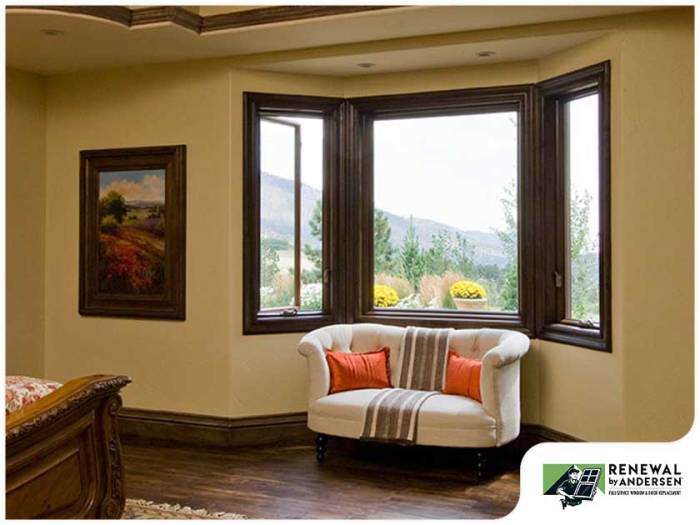
When it comes to installing energy-efficient windows, it is essential to follow proper techniques to ensure maximum energy savings and efficiency in your home.
Selection of Energy-Efficient Windows
- Consider the climate of your area and choose windows with appropriate energy performance ratings.
- Look for windows with low U-factor and Solar Heat Gain Coefficient (SHGC) to minimize heat transfer.
- Opt for double or triple-pane windows with insulating gas fills for better thermal performance.
- Ensure proper sizing and fit of windows to prevent air leakage and drafts.
Installation Techniques
Proper installation of energy-efficient windows is crucial for their performance and longevity. Here are some tips for homeowners:
- Hire professional installers with experience in energy-efficient window installation.
- Ensure that windows are properly sealed to prevent air leaks and moisture infiltration.
- Use high-quality insulation around the window frames to enhance energy efficiency.
- Follow manufacturer's guidelines and recommendations for installation to maintain warranty coverage.
Cost-Benefit Analysis
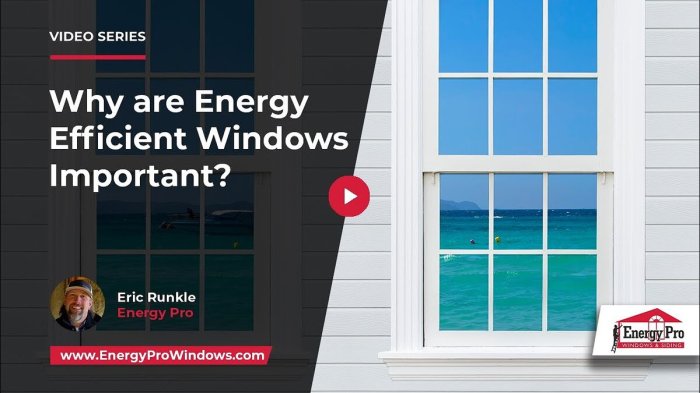
Investing in energy-efficient windows may have a higher initial cost compared to traditional windows, but the long-term savings and return on investment make them a worthwhile choice for homeowners. Energy-efficient windows are designed to reduce heat loss in the winter and heat gain in the summer, leading to lower energy bills throughout the year.
Long-Term Savings and Return on Investment
- Energy-efficient windows can help reduce heating and cooling costs by improving the insulation of your home, resulting in lower energy consumption.
- Over time, the savings on energy bills can offset the initial cost of the windows, leading to a positive return on investment.
- According to the Department of Energy, energy-efficient windows can save homeowners anywhere from $27 to $465 a year on energy costs, depending on various factors such as climate and window type.
Incentives, Rebates, and Tax Benefits
- Many utility companies and government agencies offer incentives or rebates for installing energy-efficient windows to encourage energy conservation.
- Homeowners may also be eligible for federal tax credits for making energy-efficient improvements to their homes, including installing qualifying windows.
- These incentives and tax benefits can help offset the initial cost of energy-efficient windows, making them a more affordable option for homeowners.
Ultimate Conclusion
In conclusion, investing in energy-efficient windows not only brings financial benefits but also contributes to a greener future. By understanding the importance of these windows and the savings they offer, you can make a valuable investment in your property.
FAQ Insights
Are energy-efficient windows worth the initial investment?
Yes, the cost upfront is offset by long-term savings on energy bills, making them a financially sound decision.
How do energy-efficient windows help the environment?
Energy-efficient windows reduce the need for heating and cooling, leading to lower carbon emissions and a more sustainable lifestyle.
Are there any government incentives for installing energy-efficient windows?
Yes, there are often rebates, tax credits, or other incentives available to homeowners who choose energy-efficient upgrades for their homes.

